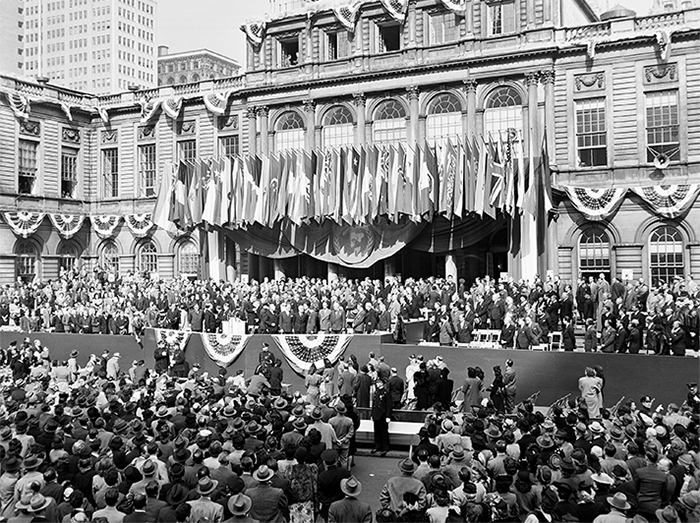
 Mayor's Office for International Affairs311
Mayor's Office for International Affairs311 Search all NYC.gov websites
Search all NYC.gov websites
History of the Office
History of the Office

In 1962, at the suggestion of United States Ambassador Adlai Stevenson, Mayor Robert Wagner established the position of the New York City Commissioner for the United Nations to act as liaison between the diplomatic community and local residents, businesses, and government.
Mayor Wagner appointed Eleanor Clark French as the first Commissioner. The Commissioner's original duties were: to promote the role of New York City as the UN headquarters; coordinate municipal services and cooperation available to United Nations officials, delegates, and personnel; and mobilize the assistance of voluntary neighborhood and community organizations in support of the diplomatic community.
In 1966, Mayor John Lindsay expanded the Commissioner's office to an official Commission named the New York City Commission for the United Nations. He appointed Frances "Peter" Lehman Loeb as Commissioner. In 1970, an executive order transferred the Consular Corps Committee of the City of New York from the Department of Public Events to the Commission, thereby establishing the Commission for the United Nations and the Consular Corps.
In 1992, Mayor David Dinkins established the Division for International Business in the Commission's portfolio. Many consulates have trade commissioners who assist foreign businesses interested in opening an office in New York City. The Division for International Business works with trade commissioners, foreign government representatives, and bi-lateral chambers of commerce and directly with foreign companies. Services include customized information and referral as well as concierge service to foreign companies to assist them in opening or expanding operations in the five boroughs.
In 1997, the City's protocol office, which had various names dating back to 1913, merged with the Commission for the United Nations and Consular Corps.
In 2012, by executive order, Mayor Bloomberg changed the name from the Commission for the United Nations, Consular Corps and Protocol to the Mayor's Office for International Affairs.
Cooperation with Global Cities
In 1960, New York City, following the Sisters Cities International model, started developing relationships with the cities of Beijing, Budapest, Cairo, Jerusalem, Johannesburg, London, Madrid, Rome, Santo Domingo, and Tokyo. In 2006, the Sister City Program of the City of New York, Inc. was restructured and renamed NYC Global Partners, Inc. in order to engage with additional foreign cities around common urban challenges. NYC Global Partners, which formally dissolved in June 2018, was a not-for-profit organization housed in the Mayor's Office for International Affairs. During its operation, NYC Global Partners engaged more than 100 international cities through its innovative programming, including over 50 cities through Global Partners Junior, an online educational exchange for underserved urban youth; 36 cities through the Innovation Exchange, an online database of municipal best practices; and 90 cities through 12 international summits. New York City continues to preserve its historic sister city relationships and build new relationships. NYC agencies also collaborate directly with cities around key opportunities and challenges to ensure the exchange of best practices. The City of New York through the Mayor's Office for International Affairs, also engages with cities through its suite of programs, including the Voluntary Local Review.


